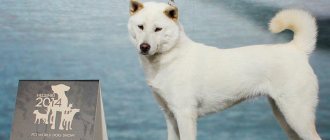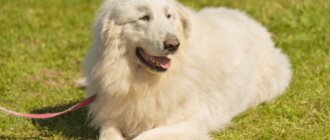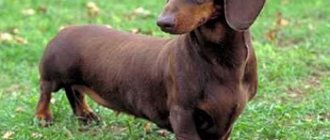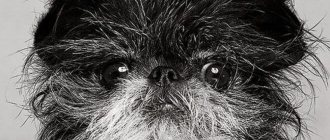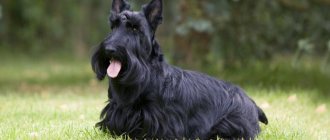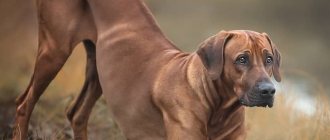HISTORICAL REFERENCE
First of all, let’s clarify how a decorative dog, which is in the same group with toy terriers, received the name “spaniel”. The official version explains this metamorphosis with the origin of the early Papillons. It is believed that the ancestors of the “butterflies” were dwarf Spaniels, common in the territories of Spain and Italy. The history of the breed lasts more than 1000 years, and we will no longer know whether this information is reliable, but the popularity of Papillons even in those distant times is difficult to dispute. It is known that miniature dogs were widespread in royal courts and were even kept by monarchs, at the expense of taxpayers. For example, the ruler of France, Henry III, became famous for the extravagance of the state treasury, keeping his Papillon in the most luxurious conditions.
France was rightfully the patron country, but the cloudless existence of the breed did not last long, just over 200 years. The outbreak of the Great French Revolution (1789), which lasted 10 years, ended tragically not only for many people.
The extinction of the “rebellion” launched the mechanism for the extermination of the breed as a symbol of old habits. Part of the livestock was saved by export to countries that were peaceful at that time. The main role in the revival of the breed was played by dogs exported to Belgium. It is easy to guess that the attempt to deliberately destroy “butterflies” created a shortage of tribal representatives. The breed remained a curiosity until the beginning of the 19th century.
This is interesting! Active breeding work led to a fairly rapid increase in the number of livestock, in addition, the breeders received fold-eared Papillons. The variety was named to match its brother - Phalen, which is translated from French as moth.
The first appearance of “butterflies” before English dog handlers and amateurs took place in 1923. The debut ended in triumph, which led to more active breeding work. Already in 1935, Papillon conquered the United States, and after that the whole world. Today, the breed remains prestigious and quite rare. The main population is concentrated in America and England, although nurseries in many countries are rapidly increasing the pace of work.
Buying Papillon puppies
When buying a puppy, it is recommended to contact a specialized nursery. Buying a puppy secondhand is an unreliable business; there is a high probability of purchasing a sick or defective animal. The first thing you need to do is look at reviews about the kennel and find out how professionals and ordinary dog breeders rate it. Then you need to look at photos of Papillon puppies and make sure that they meet the accepted breed standard. And after that you need to go to the nursery and get to know the animals in person. And then choose a dog based on its appearance and character. It is important to remember what requirements are specified in the breed standard.
For continental toy spaniels, two or three colors are acceptable, with white being the main color. Papillons, butterflies, have erect ears. And phalenids, moths, have drooping ears. Semi-erect ears on a puppy are unacceptable and are a serious fault. The Papillon's limbs are parallel to each other, and the back is straight. The bite is correct, the nose is black. By nature, this dog must be curious and energetic, and the puppy exhibits these qualities to the fullest.
When the puppy is chosen, we need to talk about the price. Elite dogs of this breed cost from 60 to 90 thousand rubles. These are show or breed animals, as the professionals call them. A pet with a pedigree will cost 25-50 thousand rubles, depending on the nursery. It is possible to find puppies even for 15-20 thousand rubles, but it is no longer possible to guarantee their purebred.
APPEARANCE
The Papillon dog breed is perceived as exclusively decorative, preferring a “cushion-sofa” way of existence. In fact, miniature four-legged animals are active in all spheres of life, they will not miss the opportunity to catch a moth or a bug, perhaps this is exactly how the spaniel genes affect them. In its natural form, the Continental Toy Spaniel is a small dog (weighing up to 4 kg), with large ears and a luxurious coat. Despite their size, the four-legged animals have a harmonious physique, well-developed muscles and fairly strong joints.
According to the breed standard, the dog’s appearance is defined by the phrase “luxurious little spaniel” - you couldn’t say it better. The Papillon's ears look like the wings of a large butterfly, and the pretty face and lively look complete the image and emphasize the dog's intelligence. Separately, it is necessary to note the flying, elegant gait and aristocratic demeanor.
The sizes allowed by the breed description are divided into categories:
- Height regardless of gender up to 28 cm.
- Mini weight from 1.5 to 2.5 kg.
- Standard weight is from 2.5 to 5 kg.
Papillon care
Caring for this French Spaniel begins with caring for its coat. This dog's hair is beautiful, wavy and pleasant to the touch. And in order for him not to lose these qualities, daily combing of his coat is required with a special dog comb. If tangles appear, they should be carefully untangled, without cutting or trying to pull them out by force. Bathe the Papillon in a special shampoo for dog hair. Your veterinarian will advise you on the specific brand of shampoo and frequency of use. It is recommended to interview several veterinarians in order to obtain accurate information and know what to wash your dog with.
To ensure that your dog can run safely, the nails on his paws must be trimmed regularly. It is recommended to consult with a specialist and find out how short the nails should be cut and with what regularity. Ears and eyes are also cleaned regularly. The fur on the ears is checked for the presence of parasites and mats. For care, cotton swabs are used, sometimes dipped in clean warm water. You cannot go deep into your ears to avoid damaging your eardrums. The nose is cleaned only in extreme cases, and these dogs require dental care only in isolated cases.
Walking with a Papillon is an essential part of care, without which both the health and mood of the pet will deteriorate. After all, this is a spaniel, which means he loves to walk, and walk for a long time. It is advisable to take him out in the morning and evening, and the walk lasts at least 30-40 minutes. It is not advisable for the Papillon to jump from great heights, since its bones are not strong enough for this, but long runs and active games will benefit the dog. Regardless of the duration of the walk, the owner is always the first to get tired, because the energy of the continental toy spaniel competes with the energy of the fox terrier.
Description of the Papillon breed
The Papillon has a naturally luxurious appearance and good physique. This dog has everything in harmony with each other. The dog's movements are smooth and light, as if imbued with aristocracy and grace.
A characteristic feature of the Papillon is its famous butterfly ears.
Basic breed standards:
- Dimensions: height at withers (height) – 20-28 cm.
- The weight of an adult dog is 3-5 kg. The dwarf papillon (mini dog) weighs 1.5-2 kg.
- The head is small, corresponding to the size of the body. The skull is rounded. The line of transition from the forehead to the muzzle is clearly defined.
- The nose is small, round, black. If you look from below, it may seem that it is slightly flattened, but in fact the “back” of the nose is straight and even.
- The lips are thin, compressed, and highly pigmented. Fit tightly to the jaw.
- The jaw is strong. This dog has a powerful and strong grip.
- bite .
- The tongue should be hidden behind the teeth. A serious defect if the tongue does not retract inside the oral cavity and sticks out from above (this is a hint to the dog breeder on how to determine whether a Papillon has defects).
- The eyes are large and wide, almond-shaped. They should not be bulging. The look is expressive. Eye color is dark, eyelids are pigmented.
- The muzzle is slightly upturned and pointed. Thin, graceful. The muzzle is slightly shorter than the skull.
- The ears are set firmly, slightly shifted back, and large in size. The standards for erect and floppy ears are the same. The tip of the ear should not end in hard cartilage.
- The tail is lowered, set high on the line of the back. Visually it resembles a flowing fountain. If the dog is excited, the tail is thrown over the hip or back. If the tail curls into a half ring or ring, this is a serious defect.
- The claws are powerful, thick, mostly black (if the dog is white, the claws may also be white).
- The paws are very long, with movable toes.
- The coat is silky, thick, healthy, soft and long, without undercoat.
- How long live ? Life expectancy – 13-16 years (if proper care). If a dog is fed properly, it can live even 20 years.
- Short stature , long body.
What does a Papillon puppy look like? Babies are no different in appearance from adults. Puppies reach their final height by six months.
Main characteristics of the Papillon dog breed
The Continental Toy Spaniel was bred in two countries, Belgium and France, which is why it is called either a French or Belgian breed. The Papillon or Papillon is a type of dog that is distinguished by its erect ears. The second type of dog is called a Phalene and has floppy ears. Otherwise, these animals are the same, belong to the same breed and are assessed according to the same standard. Dogs of this breed are related to the Russian Toy, and belong to the same class of decorative pets.
This breed has a long history, and there have been ups and downs. The first mentions of these dogs date back to the 10th-12th centuries AD. It was then that these decorative pets appeared in the courts of kings and aristocracy. In the 16th-18th centuries there were much more than two varieties of the breed, but then their number began to decline. Already in the 19th century, the main types of continental toy spaniel were the phalen and papillon, and today only these two varieties remain.
Appearance and body type of the Papillon
The dog's body is elongated, with a straight back and deep chest. The bones are thin and graceful; the dog’s bones are not strong. The abdomen is tucked, the transition from the abdomen to the chest is smooth but noticeable. The limbs are straight, elongated and thin, located parallel to each other. The tail is set high, curled into a ring and lies on the back, never docked. There are two types of Continental Toy Spaniel, differing in weight and size. The weight of dwarf continental toy spaniels is 1.5-2.5 kilograms, and in the larger variety it is 2.5-5 kilograms. The height of these dogs is 20-28 centimeters.
The dog's head is round in shape, with an elongated muzzle and a pronounced transition from the muzzle to the skull. The nose is small and black. The eyes are large, black and almond-shaped, and in dogs that meet the breed standard there is no dullness or cowardice in the eyes. Papillon means “butterfly” in French, and it gets its name from its ears. The dog’s wings are erect and shaped like butterfly wings. The Phalene - whose name translates to moth - has floppy ears, and this is the main difference between the types of Continental Toy Spaniel.
Papillon coat texture and color
The coat of the Papillon dog breed is of uneven length - there are fringes on the neck, tail and hind legs, the hair on which is longer than on the rest of the body. The texture of the coat is soft, reminiscent of premium quality fluff. The hair on the paws and face of the butterfly is short and close to the body. The Papillon does not have a pronounced undercoat, but the coat is thick. But the continental toy spaniel is not adapted to easily endure the northern winter.
For Papillon dogs, a number of colors are allowed as standard. The main color of the animal is white, with one or two-color spots. The spots cannot be blue, and a number of dog breeding organizations do not allow dogs with a red-brown tint to enter exhibitions.
All other colors are allowed by the breed standard, but black or sable spots are preferred. For tri-colored dogs, the best option would be black and sable spots on a white background. For the ears, white color is a disadvantage. The spots on the dog's head are located symmetrically, with a white dividing stripe in the center of the muzzle.
Papillon colors
Traditionally, the Papillon's coat is white with spots of various colors - red, black, pale lemon, chestnut. Mottling is allowed, but in appearance it does not always decorate the dog.
The most popular Papillon colors are:
- sable (white-sable) – the hair has red and black colors, most often “sable” is found on the ears (along the ear linen the red color turns into a black edging);
- tricolor (three-color) - the most controversial color option;
- bicolor – red and white and black and white;
- hound tricolor - “sable” on the head, one or more black spots on the body.
This is interesting! The dog's color changes as it grows. The true color appears by six months, but may change throughout life.
Character
Papillons are distinguished by their affectionate, sociable nature and love for all family members, without exception. However, puppies of this breed need early socialization, since in an unusual environment the pet can behave fearfully and even aggressively.
Despite its small size, the Papillon is not a completely “toy” dog that can spend the entire walk in the owner’s arms. He will willingly frolic, hunt insects and participate in games suggested by the owner. It’s good if there is a park or square nearby where you can let your pet run around to its heart’s content, and not limit the walk to walking on a leash.
The Papillon is friendly with other dogs encountered on the street. However, aggression, with proper upbringing, is, in principle, not his element. It is very undesirable to leave your pet alone for a long time: ardently devoted to people, he will be very sad. A Papillon who spends a lot of time locked up every day, without communicating with people, becomes irritable and scandalous.
Character and training of the Papillon
All experienced owners and breeders of Papillon dogs say that the character of these pets is friendly and energetic, but not without flaws. Which means you can be proud of your dogs, but you need to educate them. And from the first moment, when the puppy was brought into the house. All the problems stem from the fact that the Papillon is too bold and suspicious, and also has possessive tendencies. This small dog is capable of attacking a large dog, which will lead to serious injuries for the pet.
Another breed of dog, the Papillon, values its owners, but is suspicious of strangers. She will not accept a family friend right away, but when she is sure of his trustworthiness. But the owners will be jealous all the time and towards every person or animal. The Papillon is even capable of attacking someone who, in his opinion, is distracting the owner from communicating with his precious canine person. And although the dog is called a butterfly, its bite will be sensitive and unpleasant. Therefore, you will have to devote time to the little jealous one, since dogs of this breed love communication.
But with all the love of the continental toy spaniel for communication, puppies must be socialized from an early age. Otherwise, the dog will grow up suspicious and aggressive, and with his intelligence, even vindictive. The Papillon is also characterized by curiosity and independence. This butterfly will happily play with its owners, but under no circumstances will it become an obedient and uninitiative toy. Owners should also remember that the Papillon is not called a spaniel for nothing - it enjoys hunting insects and rodents, and it loves to walk to the same extent as all other hunting breeds.
Intelligence and training of the Papillon
When communicating with a Papillon dog, the difficulty is not in training it, but in getting it to agree to be trained. The Papillon is intelligent and easy to train at any age. If we talk about intelligence, then among decorative breeds this cute dog is second in intelligence only to the poodle, a favorite of circus performers and a recognized intellectual of the canine world. And if we compare all dog breeds, the continental toy spaniel is in the top ten in terms of intelligence and trainability. This is why we value it as an example of a companion dog among experienced dog breeders.
When training, it is only important to introduce an element of play into the training, and then this eternal puppy will happily begin to follow commands. For the correct execution of the assigned task, the dog is rewarded with affection and a kind word. This baby, who values communication with his owners, will be happy with every praise. But you should not scold the Papillon, he will be offended, and the training will not go further. It is better to repeat the command until the pet completes it as required. A large number of repetitions will not be required here under any circumstances.
It is advisable for a puppy of this breed to undergo a course of socialization and general training. And this is necessary for the animal to fully demonstrate its abilities. This will also help you get rid of bad habits, such as a tendency to bark excessively and aggressiveness. It should be remembered that training is required not only for show dogs; it will also benefit your pet. Training is carried out both under the guidance of an experienced dog handler and independently, with the help of training videos and articles.
Learning ability
Papillons are easy to train due to their extraordinary intelligence. Their energy and playfulness make them brilliant athletes in agility, Frisbee and other dog sports. In the company of their beloved owner, they will playfully master both obedience standards and circus tricks - the main thing is that the trainer does not skimp on praise.
Such a pet also makes no mistakes in dancing - you can often meet Papillons at freestyle competitions.
In addition, these kids are always ready to learn and play, regardless of age, confirming the popular wisdom “A small dog is a puppy until old age.”
Care and maintenance of Papillon dogs
Papillons do not require any special care, however, the owners will still have to work hard. If we talk about the “younger generation”, then the most important thing here is care and attention, but standard care should also exist.
Papillon puppies are cute little fur balls that need warmth and care. Kids are very vulnerable and sensitive ; they feel the owner’s mood and his attitude towards them immediately.
Rules for caring for Papillon puppies:
- A growing body needs proper, regular and healthy nutrition. For Papillon babies, experts have developed special feeding rules and an appropriate diet.
- A puppy, just like an adult dog, needs daily walks at least twice a day. Even if you are sorely short of time, try to devote at least 25-30 minutes to your pet for its outdoor games.
- It is necessary to constantly monitor the cleanliness of the eyes, ears, nose and coat so that your dog looks neat and well-groomed.
Caring for an adult Papillon will also not require much effort. The most important thing you need to pay attention to is the dog’s coat. A healthy Papillon's coat should be clean, thick and shiny. If you notice that it has become faded and matted, immediately show your pet to the veterinarian, since this condition of the hairline indicates the onset of the disease.
A dog’s luxurious coat is its “calling card”, so you need to take care of it every day. The dog should be bathed as soon as it gets dirty with a special dog shampoo.
Papillon wool needs to be combed 2-3 times a week, using mittens and special combs. And in spring and autumn (during the molting period) the procedure is carried out every day.
Your pet's claws also need care: it is necessary to carry out regular inspections, trim them on time and remove growths. The fur between the claws should be trimmed periodically.
Feeding the Papillon
The number of daily feedings depends on the dog's age and physical condition. Puppies under three months of age are fed 5-6 times a day, in small portions. From three to six months, the dog should be fed 3-4 times a day, while increasing the portion sizes. Well, from the age of six months, the Papillon eats no more than 2-3 times a day. The average daily portion is 170-180 grams of food, but it is recommended to check the size of the diet with an experienced veterinarian. The daily amount of food is calculated based on the dog's weight, activity and time of year.
For sick dogs, bitches after mating, pregnant or postpartum dogs, as well as animals that have undergone surgery, an increased diet is required. They are fed more often and their daily food volume is increased. But it is not recommended to overfeed this dog; it tends to gain excess weight. If the dog nevertheless begins to gain weight, then physical activity increases and the diet decreases. And owners should remember that an increase in a dog’s weight by 10-15% before cold weather is a normal reaction of the body. Papillons can be fed both premium and super-premium dry food, as well as natural food.
With natural feeding, the diet of this breed consists of meat, porridge and plant foods. Meat makes up 30-40% of the daily portion, and it should be lightly cooked and contain no bones. The preferred meat is lamb, veal or beef, but it is better not to give poultry to the Papillon. Buckwheat or rolled oats are suitable cereals, and they make up up to half of the dog’s daily diet. Well, from plant foods we choose root vegetables such as carrots or beets, as well as cabbage and zucchini. Nightshades are not recommended for dogs. Vegetables should be boiled and added along with some greens.
Some interesting facts
- Nervousness and aggression are not inherent in this breed. Avoid puppies with this disposition.
- The most important thing for Papillons is a sufficient amount of attention from humans.
- Puppies of this breed are very gentle. They can be harmed at an early age when playing with young children.
- Papillons are not suitable for families with very young children.
- The Papillon is one of the dogs that is particularly sensitive to anesthesia. Don't forget this if you have to have surgery.
- Never buy puppies from random breeders. Do this with trusted dog breeders, preferably on the recommendation of friends and relatives.
Diseases
These lively and active dogs also have weak points. You need to carefully monitor your pet’s health and, if anything happens, immediately contact a veterinarian.
The most common Papillon diseases are:
- entropy;
- congenital deafness;
- progressive retinal atrophy;
- dislocation of the kneecap;
- hypoglycemia;
- cataract;
- reverse sneezing.
Very often, representatives of this breed experience dislocation of the kneecap. There is also a bilateral dislocation (or in the medial direction). In severe cases, it may be necessary to resort to surgery, otherwise the animal will limp for the rest of its life.
Genetic diseases include progressive retinal atrophy. First, the sick animal loses night vision, and after a while, day vision also deteriorates. To identify the disease, special tests are used. This disease leads to complete loss of vision.
If we talk about such a disease as deafness, then it can be both congenital and acquired. If a dog contracts an infection during pregnancy, there is a possibility that some of the cubs may be born deaf. Otherwise, the animal may get sick and gradually lose hearing, so you need to constantly check the dog’s ability to hear.
Nutrition and health
There are no special rules in feeding Papillons, other than those that apply to other dogs. The diet should be healthy and balanced. Whether the food is natural or ready-made does not matter much if it meets all the physiological needs of the dog.
Owners of Papillons should take into account that representatives of the breed have a very good appetite and are prone to overeating, which should not be allowed. There must be constant access to drinking water.
If you prefer ready-made food, then, of course, in this case it is worth using high-quality holistic food or at least super premium food.
Despite the fact that the breed is very old, there are no special hereditary diseases noted in it. There is only some predisposition to entropion of the eyelids, corneal dystrophy, cataracts and congenital deafness. Papillons usually do not tolerate anesthesia very well, and in old age they often experience fractures. Life expectancy is up to 16 years.
Papillon nutrition
Papillons are fed according to their age and size without overfeeding, so that they do not turn into a “square elephant”.
- In a Papillon of normal weight, you can feel the ribs.
- After eating, the dog should rest for good digestion of what it has eaten.
- To prevent the Papillon's posture from deteriorating, the bowl should be placed on a stand.
- To prevent pyogenic and pathogenic bacteria from appearing on the bowl, your pet’s bowl should be washed after eating.
- There should be a bowl of fresh water on a stand next to the food.
Food should always be fresh, since spoiled food leads to enteritis and poisoning. It should not be soft and frayed. For small puppies, it is chopped finely; for older puppies, it is cut into cubes that they cannot choke on, but can chew.
In the first year of life, good nutrition lays and forms strong bones, excellent coat, strengthens eyesight and sense of smell, and promotes growth. Proper nutrition is a guarantee of an excellent exterior for the Papillon. With a lack of food, rickets and blindness can develop, the wrong size of paws can form, and the coat will not be shiny and shiny, but will be sparse and short. With poor nutrition, the dog will be loose and raw, which is not typical for this breed.
Here's what you shouldn't feed your Papillon:
- food from your table - it contains too much salt and fat;
- boiled or raw bones, especially chicken bones - they injure the stomach and intestines and are not digested at all, which can lead to the death of the dog;
- salty and sweet food with spices and onions;
- fatty and fried foods, especially pork meat and lard, since you can “plant” the liver and pancreas, and pigs suffer from the same diseases as dogs;
- chocolate and chocolate candies - they can kill your pet;
- raw and even boiled milk - diarrhea will occur; milk porridges are cooked with the addition of water (2:1); smoked meats and fish with sharp bones.
Feeding Papillon puppies in the very first months after weaning from their mother's milk should be balanced with the necessary minerals, vitamins, proteins and fats for normal development and growth. Puppies are fed 5-6 times a day at certain times. By 6-7 months the dog is switched to 2 meals a day. After a year, you can feed a dog once a day, but many breeders continue to feed it twice - in the morning and at night.
Always think before taking on such responsibility!
Inna: “When it comes to inventing thousands of ways to attract attention, my favorite Papillons are simply experts. They take advantage of my gentleness and kindness to get their way. Sometimes it feels like they are testing how trusting I am.
Valery: “Thanks to their small size, these dogs are tireless on walks, run quickly, and do not get tired at all. The Papillon can run many kilometers and loves to travel. Papillons love to splash in the water.”
Rina: “I have seen a lot of dogs in my life. Finally it was Papillon's turn. Having come to our house by chance, he remained there forever.”
Choosing a Papillon puppy
The first thing you need to do is decide whether you really need a Papillon. If you have weighed all the pros and cons, then carefully study the rules for choosing a Papillon puppy.
In fact, it is impossible to define clear selection criteria for those people who simply fell in love with this dog and get it for their own pleasure and aesthetic beauty.
Many people choose puppies simply by their appearance - more fluffy or with an attractive face.
But if you decide to take your dog seriously - to participate in exhibitions and various competitions, then you need to take into account some criteria for choosing a Papillon puppy:
- the puppy must be from parents who have a good pedigree;
- it is necessary to pay attention to the color of the coat, which must meet the standards;
- the puppy’s physical characteristics must be normal according to its age;
- correct proportions of body parts, especially the head;
- the correct position of the Papillon's tail and limbs, which is already visible from two months;
- Assess the puppy’s emotional state for nervousness and aggression.
- If you need a brave dog that will accompany and protect you everywhere, you need to pay attention to the puppy’s temperament - it should be colder and respond to provocations with an appropriate reaction.
- An equally important criterion in choosing a Papillon puppy is the breeder himself - if he is a responsible person, you will get an excellent healthy puppy. It is necessary to obtain advice from dog handlers and veterinarians who have certain knowledge in this area - after all, they are familiar with the majority of breeders of this breed.
- Don't rush into choosing a puppy - watch their movements and behavior, take a closer look at each of them, and only after that you can make your choice.
Mating of continental toy spaniels
When choosing a partner for mating, it is not enough to look at photos of Papillon dogs. Even though the photo will show all the existing flaws, it is worth checking the genetic map of the applicant or candidate for the presence of a predisposition to certain diseases. It is still impossible to cross Phalena and Papillon; their offspring often come out with semi-erect ears, which are prohibited by the breed standard. Dogs that have not undergone treatment to eliminate parasites are also not allowed to mate. Parasites include all types of fleas, ticks and helminths.
Papillons are also divided into two weight categories, and this division exists precisely to simplify the mating procedure. Continental Toy Spaniels are conventionally divided into dogs weighing up to 2.5 kilograms, and dogs weighing more than 2.5 kilograms. It is recommended to cross dogs of the same weight with each other. And we must remember that the lower the bitch’s weight, the higher the likelihood that she will have to have a caesarean section during childbirth. What do professional dog handlers say about papillon mating:
“Dogs for mating are selected based on the following characteristics: absence of a tendency to hereditary diseases, compliance with the breed standard, one weight category and even grooming. Well, the absence of parasites. Moreover, when determining the breed standard, not only appearance is important. If a dog is overly aggressive, cowardly or stupid, then it is likely that these qualities will be passed on to its offspring. Therefore, it is necessary to carefully select candidates for mating.”
Owner reviews of the Papillon
A very smart breed, in the ranking among all breeds in terms of intelligence they are in 8th place, but among small breeds they are in 1st place. They are really very smart , they simply guess your thoughts. I’m just thinking about getting up and going to the kitchen, and they’re already standing in front of me, and this is just one example of many. If someone causes mischief, they begin to hide, while the one who caused the mischief hides. They also understand you very much; if you feel bad, they will always come and console you in their own way, as best they can. Easy to care for , no haircut required, wash once every 10-14 days, dry the coat with a hairdryer, then the coat will be fluffier, combing 2 times a week is more than enough. They love to play with children , but at the same time they show their temper, but they also don’t touch them; there are, of course, exceptions. They love to go for walks, they just don’t want to go home.
Tatiana
When buying this breed, I could not even imagine that I was buying a MIRACLE! Of course, maybe I was just lucky with the character of my dog, but according to communication and feedback from Papillon fans, they all evoke delight and respect for their intelligence and intelligence. This is a little man, a sunbeam!
Very clean , well, very (for our family this is important), he sees a piece of paper dropped, picks it up and tears it, carries it back, washes toys, likes to play only with clean ones (or brings them to the bathroom and waits for them to wash them or throws them into a basin of water ( put it there on purpose) and is waiting for it to be washed.)))
There have been no problems with clothes since childhood - he’s a fashionista, he’s happy with every suit, he loves to wear boots, and in general he loves everything new. Very patient, obedient, not intrusive, sensitive to mood . And how talkative, you talk, and he answers. (I don’t know, maybe we have something like this?) Cheerful, perky, but in moderation. I’m not picky about food, but food is better either in cans or natural, he loves berries! Health is good. Our Papillon is a guard, but does not bark much , only at strangers, and does not bite. But he doesn’t like to play with other breeds of dogs; he likes poodles.
The dog is not selfish - it won’t wake you up in vain and won’t interfere with your activities. Grooming is not difficult, but clothing is needed, this breed has no undercoat and gets cold in winter.
Papillons are a gift from fate!!!!!

